How Long To Run Your Lawn Sprinkler: A Guide to Efficient Watering
- March 22, 2024
- 1 comment
Learn how long to run your lawn sprinkler for optimal grass health and a lush green lawn. Discover the factors influencing watering schedules, including local climate and grass type.. However, determining the right amount and timing of watering can be challenging. Overwatering can lead to pooling, drowning the grass roots, and attracting pests like mosquitoes. On the other hand, underwatering can result in dry, brittle grass and its own set of pest issues. There is no one-size-fits-all approach to watering a lawn. The ideal watering schedule depends on factors such as local climate and the type of grass in your area. Keep reading to discover how to effectively water your lawn.
Yard work made easy! We’ve got reviews on the best lawn sprinklers, best lawn mowers, best top zero-turn mowers, best lawn aerators, STIHL’s best trimmers, and starter kits for beginner gardeners – all to keep your lawn looking lush!
When to Water Your Lawn?
Determining the best time to water your lawn each day can significantly impact its health and appearance. Generally, the early morning is considered the optimal time for watering. This is because the temperatures are cooler, reducing evaporation, and allowing the water to penetrate the soil effectively. Additionally, watering in the morning allows the grass to dry before the evening, which can help prevent the growth of fungi and diseases.
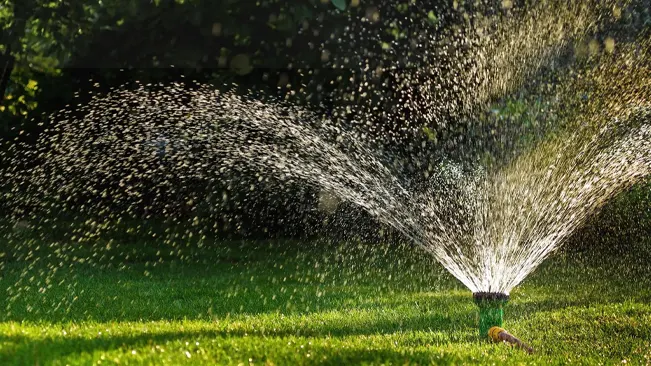
Alternatively, watering in the late afternoon or evening is not recommended. During these times, temperatures are higher, leading to increased evaporation and potentially wasting water. Additionally, wet grass overnight can create an ideal environment for fungal growth. By watering in the early morning, you can ensure that your lawn receives the water it needs to thrive while minimizing water waste and the risk of disease.
Cool Season and Warm Season Grasses
- Cool-Season Grasses: These grasses thrive in cooler climates and have their peak growth periods in the spring and fall. They include:
- Kentucky Bluegrass: Known for its fine texture and rich green color, Kentucky bluegrass is commonly used in northern lawns.
- Fescue: Tall fescue and fine fescue are popular cool-season grasses known for their drought tolerance and ability to grow in shade.
- Perennial Ryegrass: Often used in mixtures with other grasses, perennial ryegrass has a fine texture and quick establishment.
- Warm-Season Grasses: These grasses are well-suited for hot climates and have their peak growth periods in the summer. They include:
- Bermuda Grass: Known for its excellent heat tolerance and rapid growth, Bermuda grass is commonly used in southern lawns and sports fields.
- Zoysia Grass: Zoysia grass is known for its dense growth habit, drought tolerance, and ability to withstand heavy foot traffic.
- St. Augustine Grass: Commonly found in southern lawns, St. Augustine grass has a coarse texture and good shade tolerance.
How Long You Should Water Your Lawn
Soil Type
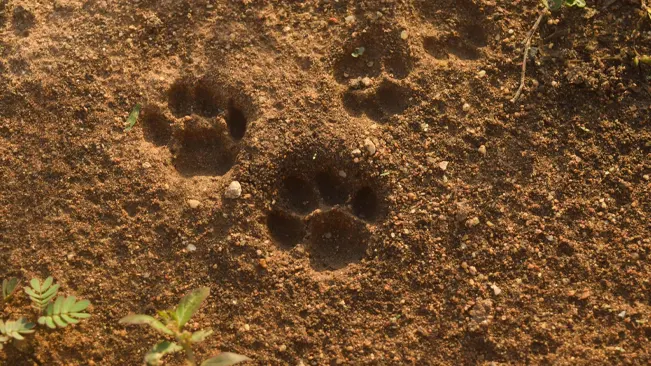
The composition of your soil plays a significant role in how quickly water drains and how long it retains moisture. Sandy soils drain water quickly and may require shorter watering durations but more frequent watering. In contrast, clay soils retain water longer, so watering durations can be longer but less frequent.
Weather Conditions
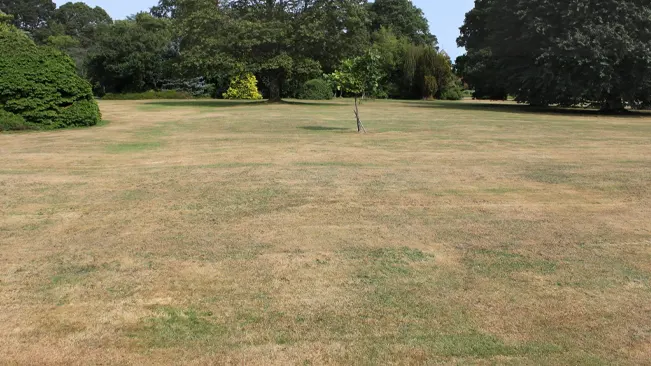
Weather conditions, particularly temperature and humidity, impact the evaporation rate of water from your lawn. During hot, dry weather, you may need to water more frequently or for a longer duration to ensure your lawn receives an adequate amount of water. Conversely, cooler or cloudy weather may require less frequent watering.
Irrigation System Efficiency
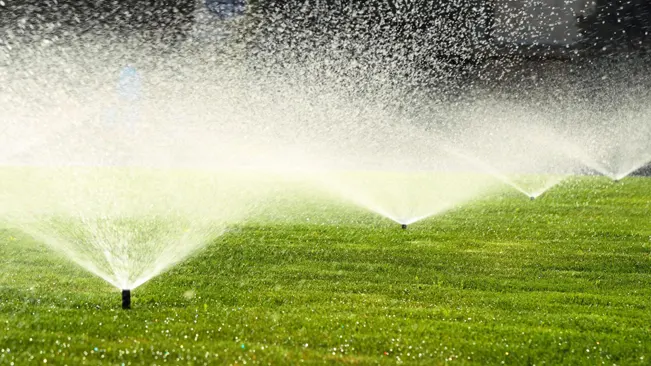
The efficiency of your irrigation system, including the type of sprinkler heads and their distribution uniformity, affects the watering duration. Ensure your system delivers water evenly across the lawn to avoid over or under-watering.
Water Pressure

Low water pressure can affect the distribution of water from your sprinklers, leading to uneven coverage. If you have low water pressure, you may need to water for a longer duration to ensure adequate coverage.
General Guidelines for Sprinkler Run Time
- Frequency: Water deeply and infrequently rather than shallow and often. This encourages deeper root growth and makes your lawn more resilient to drought.
- Amount: Aim to provide about 1 inch of water per week, including rainfall. This can vary based on your location and the time of year.
- Time of Day: Water in the early morning, typically between 4 a.m. and 10 a.m. This reduces evaporation and allows the grass to dry before evening, which can help prevent disease.
- Run Time: Run your sprinklers for long enough to achieve the desired depth of water penetration. This may range from 15 to 45 minutes per zone, depending on factors like soil type and sprinkler efficiency.
- Adjustments: Monitor your lawn for signs of over or underwatering, such as wilting or runoff. Adjust your run times as needed based on weather conditions and the health of your lawn.
- Conservation: Consider installing a rain sensor or smart irrigation controller to prevent watering during or after rainfall, reducing water waste.
- Local Regulations: Be aware of any watering restrictions in your area and adjust your schedule accordingly.
How to Water Your Lawn Automatically with Sprinklers
In-ground Sprinklers
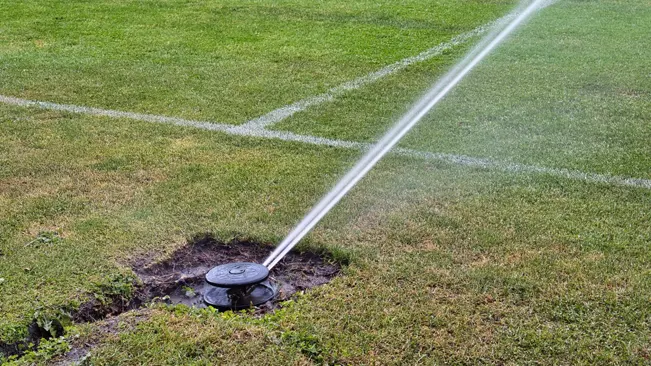
In-ground sprinkler systems are integrated into your property’s landscaping, providing a seamless and efficient way to water your lawn. These systems feature sprinkler heads that pop up from the ground and deliver a predetermined amount of water according to your settings. They offer precise watering control and can be programmed to water specific zones of your lawn at different times.
Hose End Sprinklers
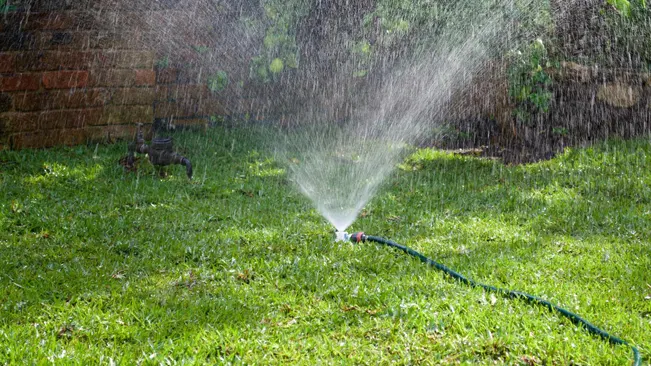
Hose end sprinklers are easy-to-install options that attach to the end of a garden hose. They come in various styles and intensities, allowing you to choose the right option for your lawn. While they are more affordable than in-ground systems, they require manual setup and positioning. However, they can still provide effective and convenient watering for smaller lawns or specific areas that need extra attention.
Oscillating Sprinklers
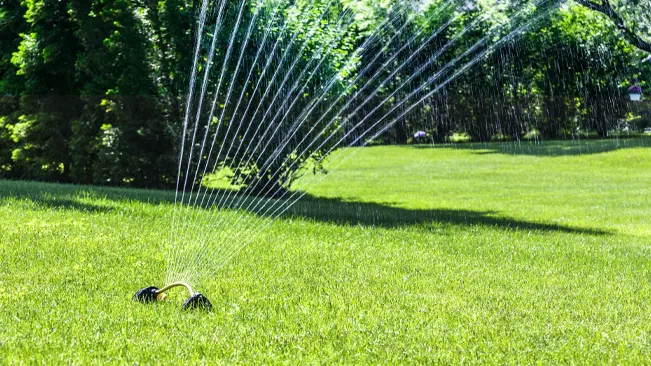
Oscillating sprinklers use a series of quick pulses to distribute water evenly over a large area. They are ideal for newly seeded lawns or areas with shallow root systems that require gentle watering. These sprinklers are easy to set up and can cover a wide area, making them suitable for medium to large lawns. However, they may not be as precise as in-ground systems and may require adjustment to ensure even coverage.
Signs Your Lawn Needs Water
Footprints Remain
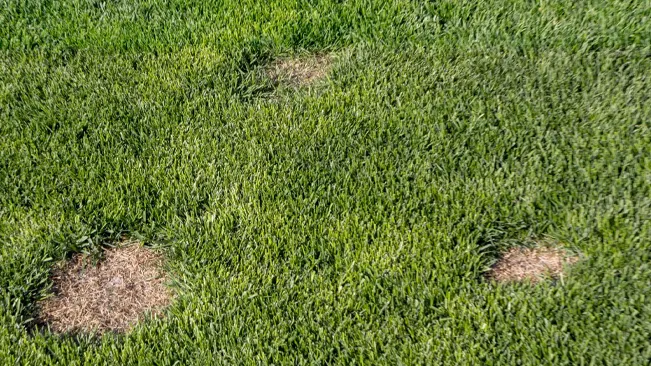
When footprints or tire tracks linger on your lawn, it indicates that the grass blades are not bouncing back, which is a sign of dehydration. This happens because the grass lacks the necessary moisture to maintain its turgidity. To remedy this, water your lawn deeply to ensure the moisture reaches the root zone where it’s needed most. Adjust your watering schedule to prevent future dehydration.
Color Change
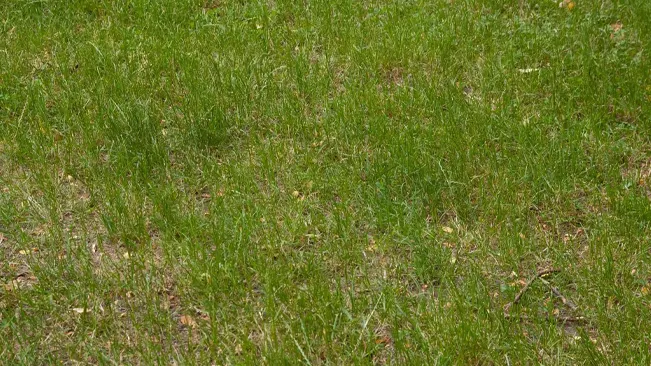
Healthy grass has a vibrant green color, so a dull or grayish-green hue can indicate a lack of water. This change in color is due to the grass’s natural defense mechanism, where it reduces water loss by closing its stomata, leading to a dull appearance. To revive your lawn’s color, water it deeply and consider mulching to retain soil moisture and reduce water evaporation. Additionally, aerating your lawn can improve water penetration and absorption, helping to restore its vibrant green color.
Wilting Blades

Wilting or folding grass blades are a clear sign of dehydration and stress. This occurs as the grass tries to conserve water by reducing its surface area exposed to the sun. To revive wilting grass, water deeply and consider applying a slow-release fertilizer to promote healthy growth and recovery. Adjusting your mowing height can also help reduce stress on the grass and promote water retention in the soil.
Soil Dryness
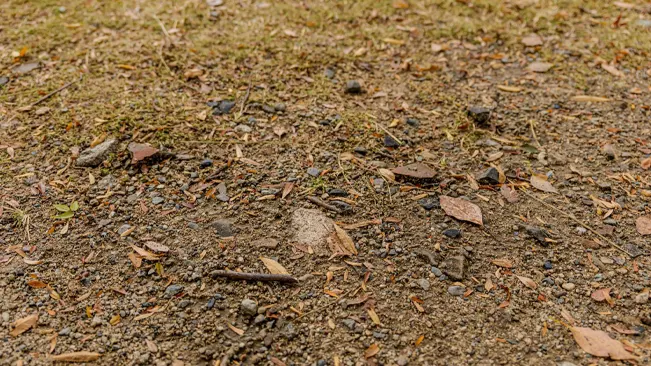
Checking the soil moisture level is crucial for determining if your lawn needs water. A simple test is to insert a screwdriver or probe into the ground. If it goes in easily, the soil is moist enough. However, if it’s difficult to penetrate, the soil may be too dry, and your lawn needs watering. Consider watering early in the morning to reduce evaporation and ensure the water reaches the root zone.
Cracks in Soil

Cracks forming in the soil, especially during hot and dry weather, indicate that the soil is drying out and your lawn needs water. Consider applying a layer of mulch to retain soil moisture and reduce evaporation. Additionally, aerating your lawn can improve water penetration and help prevent soil compaction, allowing water to reach the root zone more effectively.
Advanced Techniques for Determining Sprinkler Run Time
The catch can test is a simple yet effective method for determining the efficiency of your sprinkler system and ensuring uniform water distribution across your lawn. To conduct the test, strategically place several catch cans, such as tuna cans or rain gauges, in a grid pattern throughout your lawn. Run your sprinklers for a predetermined amount of time, typically 15 to 30 minutes, and then measure the depth of water collected in each catch can. This data allows you to calculate the average water output of your sprinklers and identify any areas of your lawn that may be receiving too much or too little water.
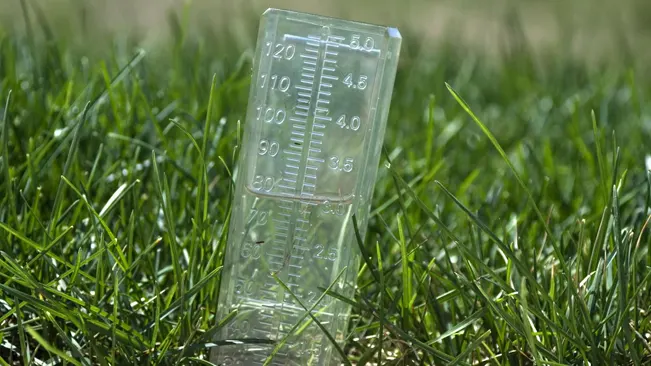
Once you have completed the catch can test, use the collected data to adjust your sprinkler run time to ensure that each area of your lawn receives the appropriate amount of water. If certain areas are receiving too much water, you can reduce the run time for those zones, while areas that are receiving too little water may require an increase in run time. By fine-tuning your sprinkler system in this way, you can optimize water efficiency, promote healthy grass growth, and prevent issues such as dry spots or water runoff.
Our Recommendation
- Water deeply and infrequently: Instead of watering lightly every day, water your lawn deeply but less frequently. This encourages deep root growth and helps your grass withstand periods of drought.
- Adjust watering frequency based on signs of stress: Monitor your lawn for signs of stress, such as discoloration or wilting, and water when needed. Cool-season grasses may require more frequent watering during hot weather, while warm-season grasses are more drought-tolerant.
- Use a catch can test: Perform a catch can test to determine how much water your sprinklers are delivering. Adjust your sprinkler run time to ensure you are applying the recommended amount of water for your grass type.
- Water in the early morning: Watering early in the morning reduces evaporation and allows the water to penetrate the soil before the heat of the day.
- Consider using a smart irrigation controller: Smart controllers can adjust watering schedules based on weather conditions and soil moisture levels, helping you avoid over or underwatering.
Conclusion
In conclusion, determining the optimal run time for your lawn sprinkler system is crucial for maintaining a healthy and vibrant lawn. Factors such as weather conditions, grass type, soil type, and sprinkler efficiency all play a role in this decision. By following general guidelines, utilizing advanced techniques, and ensuring proper maintenance of your sprinkler system, you can ensure that your lawn receives the right amount of water for optimal health and beauty. Remember to adjust your watering schedule as needed based on changing weather conditions and the specific needs of your lawn.
FAQs
- How often should I water my lawn?
The frequency of lawn watering depends on several factors, including weather conditions, grass type, and soil type. In general, it’s best to water deeply and infrequently to encourage deep root growth. - How can I tell if my lawn needs water?
One way to determine if your lawn needs water is to step on the grass. If it springs back, it’s likely well-hydrated. If it stays flat, it may need water. - Can I overwater my lawn?
Yes, overwatering can be detrimental to your lawn’s health. It can lead to shallow root growth, disease, and weed growth. - What is the best time of day to water my lawn?
Watering early in the morning is best, as it reduces evaporation and allows the grass to dry before evening, reducing the risk of disease. - How can I reduce water waste when watering my lawn?
To reduce water waste, make sure your sprinkler system is properly maintained, and adjust your watering schedule based on weather conditions and the needs of your lawn.
For more expert gardening and advice, explore our guides, discover top recommendations in our best section, and delve into in-depth product reviews in our review section. Happy Gardening.

Joel Cunningham
Forestry AuthorI'm Joel Cunningham, an expert in pruning and weed management with over a decade of experience. My skills are rooted in formal training and extensive practice, focusing on advanced pruning techniques and efficient weed control. I'm known for my quality work, precision, and deep understanding of plant health and soil dynamics. My contributions extend to educational initiatives where I share sustainable practices and advice, establishing myself as a reliable and authoritative figure in the gardening community.








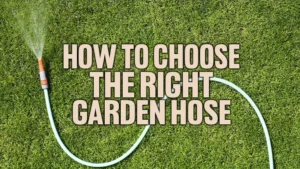



Very insightful information about managing our lawns, freguency of watering including signs of over and unde watering.
Sammy
March 28, 2024 2:16 pm